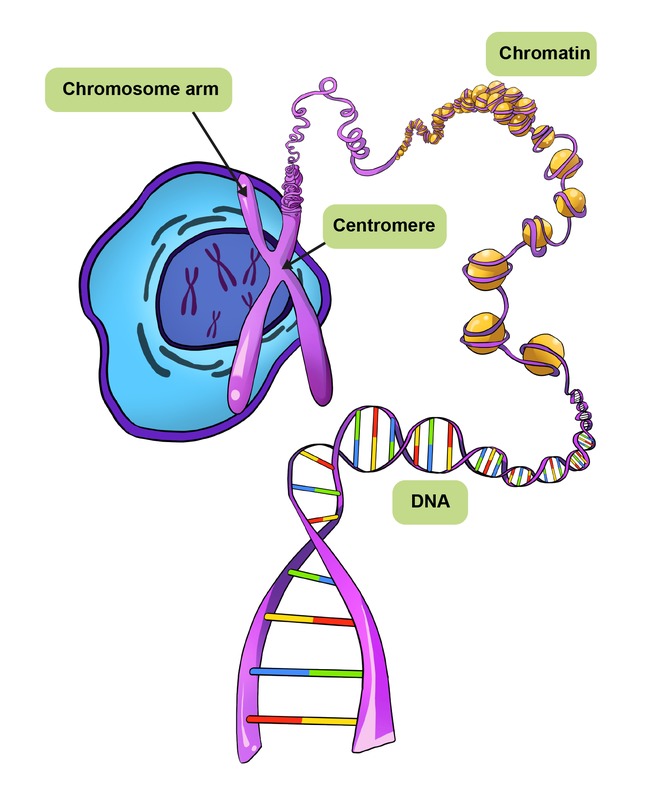2.5 Each cell of yours contains about two metres of DNA
 A human body contains about 100 trillion cells (100 000 000 000 000 000). However, we all began as the result of two merged sex cells.
A human body contains about 100 trillion cells (100 000 000 000 000 000). However, we all began as the result of two merged sex cells.
The ovum is the largest human cell. It has a diameter of about 0.1 mm. Except for the red blood cells, all cell nuclei contain two meters of deoxyribonucleic acid molecule, or DNA.
Human cell DNA is packaged in 23 chromosome pairs, 46 chromosomes in total. This is true for all human cells except gametes, which have 23 chromosomes.
The chromosome is made up of DNA (a chromatin chain) and its excipients. Certain proteins (yellow balls in the image on the right) help to pack these two meters of DNA into a smaller space.
A particular section of DNA forms a gene, or a 'genetic factor'. Genes are able to direct a cell to produce specific proteins. Proteins, in turn, guide our development and metabolism. Each DNA strand of a chromosome contains thousands of genes, smaller chromosomes have fewer than the larger ones. However, most of the DNA consists of ‘non-coding DNA’, which does not provide instructions for making proteins. The identity of regulatory elements and other functional regions in non-coding DNA is not completely understood. However, the human genome has been fairly well mapped.
DNA can be thought of as the "cookbook of life", as it contains instructions for an individual's growth, development and vital functions. DNA even passes these instructions on to the next generation in gametes. Some scientists think that we are just a suitcase for our genes (DNA) to be passed onto future generations.
It's mind-boggling to think that we all have received our own DNA from a chain of generations that has lasted for millions of years. This chain of germ cells is called the germline. Changes in the cells of the germline are passed on to the next generations.
As the cells divide in mitosis, the DNA molecule is copied and divides into daughter cells identical to parent cells. On the other hand, when germ cells are formed, the cells divide differently in meiosis, whereby only one of each pair of chromosomes, or a total of 23 chromosomes, ends up in daughter cells.